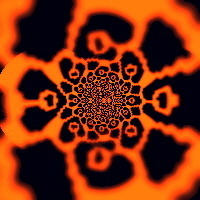게임엔진(GameEngine)
- BlueprintCallable, BlueprintNativeEvent 를 동시에 포함 2017.04.19
- 언리얼 안드로이드 빌드 오류 2017.04.06
- Generate Visual Studio project files 2017.03.31
- PBR 자세한 샘플 예시 2017.03.31
- 인터페이스 ( UInterface ) 2017.03.23
- 편집하면서 결과를 볼 수 있는 함수 SynchronizeProperties() override; 2017.03.22
- World Location 과 Relative Location 의 차이 2016.11.24
- A 메쉬애니를 B메쉬에 동일한 애니메이션을 적용 시키고자 할 때 SetMasterPoseComponent 2016.11.23
- Render 3D objects in UMG Widget/HUD , you know~! 2016.10.27 1
- Vulkan 이 언리얼4에 들어가게됩니다, 언리얼 4.14 preview 에 포함 되는데.. 2016.10.27
- 마티네에 이벤트를 추가한 후 블루프린트에 넣는 과정 2016.09.30
- How do i call a custom event funtion? 2016.08.24
- USaveGame : 하드디스크에 정보를 저장하기 2016.08.11
- Behavior tree Selector , Sequence 의 차이 Difference 2016.08.02
- Set Array Elem 사용시 주의 점 2016.07.29
- int 를 FString 으로 변환하기 또는 FString 을 다른 자료형 타입으로 변환하기 2016.07.26
- c++ 에서 블루프린트에 스트링/로그 출력 2016.07.20
- TSharedPtr, TWeakPtr 에 대한 Dynamic cast 는 지원하지 않음 , NO RTTI 2016.07.17
- how to create only header file while exist inside include generate.h ? , 하지만 이미 자동으로 UHT 가 자동으로 만든다 2016.07.13
- 액터의 생명주기 2016.07.13
- String 과 FString 변환, String Conversions: FString to FName, FString to Int32, Float to FString 2016.07.12
- c++에서 구조체를 블루프린트로 나타내기, 핀 분할, 재결합까지 표현 2016.07.08
- 언리얼4 Blueprint 에서 unit64 사용하기 2016.07.08
- C++에서 블루프린트 함수 호출하기 .2 인자와 같이 넘기기 2016.07.08
- C++에서 블루프린트 함수 호출하기 .1 2016.07.08
- c++ 에서 블루프린트 이벤트 호출하기 2016.07.08
- 델리게이트 (Delegate) 2016.07.07
- UGameInstance, 싱글톤 생성 부모 클래스 2016.07.06
- 언리얼4에서 C++ 로 싱글톤, Game Instance 2016.07.06
- BeginPlay VS Constructor? 2016.07.06

